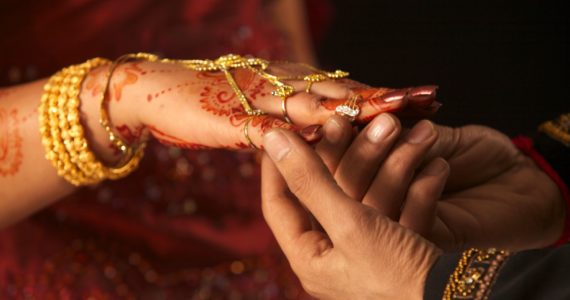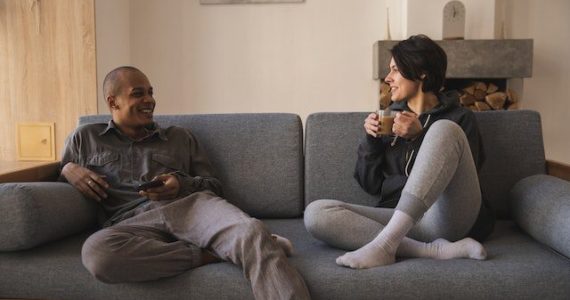By Noam Shpancer, Ph. D
What we know, and don’t know, about the process of mate selection.
Most of us seek a partner, for life or at least for a while. But how do we choose? After all, we meet hundreds, even thousands, of people in the course of our daily lives. What makes two people pick one another from among the myriad available candidates? Psychological science has long been trying to answer this question, and with considerable success.
Two main theories have guided scientific thinking on the subject. First is evolutionary theory, which claims that behavioral tendencies, physical characteristics, and personality features that promote our chances to survive and reproduce become, by that virtue, desirable to us. In addition, biological and anatomical differences between organisms will dictate different optimal solutions to the same problem. For example, if two animals, one with nimble feet and the other with strong wings, encounter a hungry predator, how will they deal with the survival threat? Most likely, the first animal will run away and the second will fly off.
Likewise, the evolutionary approach predicts that the biological and anatomical differences between men and women will result in different preferences for partner selection. For example, human biology dictates that women need help and protection during pregnancy and that their fertility is time-limited. Therefore, it makes sense that men who can provide protection will be deemed attractive to women and that young—and hence fertile—women will be attractive to men. Indeed, studies show that when it comes to long-term relationships, women overall emphasize the importance of status parameters while men find female youth highly attractive.
On the other hand, “social role theory,” developed by the American psychologist Alice Eagly, argues that social—rather than biological—processes dictate our social choices. According to this argument, the mate selection rules are dictated by the roles that women and men occupy in society. Thus, people’s preferences in the search for a mate are expected to shift as social roles and norms shift. For example, women are attracted to men with power and money because society limits their own ability to gain power and money. If tomorrow, most positions of power and money go to women, then a man’s status and wealth will matter much less to women, while male beauty, youth, and stamina may come to matter more.
Indeed, studies over the past 50 years show some fundamental changes in mate preferences among both men and women. For example, since maintaining a comfortable life on one salary has become difficult in Western countries, and since most women in those countries work and earn income, both men and women currently put more emphasis than before on the partner’s economic and social status when choosing a life partner. Matters of housework, such as cooking and cleaning capabilities, on the other hand, are no longer considered important criteria for selecting a partner in both sexes. These changes indicate that the culture has an impact on the qualities we deem attractive.
Motivations, be what they may, studies from the 1940s to the present point to the existence of several well-supported “laws of attraction” that govern the general process of choosing a long-term mate:
1. Exposure and Familiarity. In general, we grow to like those around us and those with whom we have frequent contact. The more time we spend with someone, the greater the chances that we’ll like, accept, and fall in love with him or her. Now granted, we all know someone with whom increased interaction causes increased frustration and resentment, but that is the exception that proves the rule. Simple exposure is one reason why many romance blooms at work or at the university. Daily contact over time turns strangers into friends and more.
2. Physical Attraction. Physical beauty is an important life advantage, and it is of fundamental significance in the mating game. Bottom line: You do not want to spend your life with someone you find physically repellent. Physical attraction, it turns out, obeys the laws of the market: The best goods cost more, and so buyers do not get what they want but what they can afford. Ultimately, the rich drive the Mercedes, the middle class drive the Toyota, and the poor ride the bus. Similarly with physical attractiveness, beautiful people end up with others who are very beautiful, average looking with average looking, etc.
3. Personality and Character. Research on the personality factors that attract us to others (and others to us) has identified two personality factors that are considered across the board desirable: competence and warmth. Competent people, that is to say, intelligent and socially skilled, are considered more attractive. Kind people with a warm personality are also more attractive. Warm and wise is a winning pair in the mate selection tournament.
4. Proximity. Most of us will marry someone who lives within walking or driving distance. We are unlikely to persist in a relationship or get married to someone who’s a transatlantic flight away. The great poet Yehuda Amichai wrote, “Advice for good love: Don’t love those from far away. Take for yourself one from nearby. The way a sensible house will take local stones for its building.” And the poet was right—most of us choose from the nearby selection. Long-distance relationships are more difficult to nurture, and they survive much less often.
5. Similarity. This is without a doubt the most powerful finding in this area. We are drawn to people who are like us. Christians will appeal to other Christians, educated people are drawn to other educated people, leftists love leftists, extroverts love extroverts, etc. On almost every parameter of background, personality, values, and experience, we prefer someone who has a lot in common with us over someone who is totally different from us, and also over someone who “completes” or complements us. The ocean wants the ocean, not the beach, and not the boat. One reason for this preference is that it’s easier for us to communicate, understand, know, and trust someone who speaks our language, gets our culture, shares our values, or believes in our God. The second reason is that loving someone similar to us amounts, psychologically, to killing two birds with one stone: He’s wonderful, and he’s just like me; therefore, I’m wonderful! And who does not want to feel wonderful?
How We Decide
Several years ago, in an attempt to refine our understanding of the forces that shape mate selection, American researchers Todd Shackelford, David Schmitt, and David Buss analyzed the responses of more than 9,000 women and men from 37 countries to a questionnaire about their preferences regarding potential life partners. The researchers used a technique called “principal components analysis.” This technique seeks to reduce a wide universe of data into a small number of basic underlying factors. For example, millions of cars travel on the roads all the time, going here and there. But all this commotion can be reduced to two basic components: direction and speed. These are the only factors controlled by the driver, and all the driving being done can be explained by some combination of these two factors alone.
The researchers identified four universal components underlying the process of mate selection. Each of these four components amounts to an internal negotiation we perform when choosing a romantic partner. Here are the four components, in order of importance.
1. Love vs. Status/Resources. When choosing a partner, we frequently engage in internal negotiations whereby the value of romantic love is pitted against the value of social status and economic security. If the love is strong, we may sacrifice security or economic status. If the potential partner’s status is high, we may compromise regarding the intensity of our romantic feelings.
2. Dependable/Stable vs. Good Looks/Health. When choosing a partner, we tend to compromise regarding emotional stability if the potential partner is very attractive physically. Alternatively, we may agree to accept a less attractive partner if they are exceptionally stable and emotionally sound.
3. Education/Intelligence vs. Desire for Home/Children. We tend to forgive a partner who’s pursuing higher education and a career if they are not interested in having many children. Conversely, we may forgive the limited educational and career achievements of someone who really wants to have children and raise a large family.
4. Sociability vs. Similar Religion. Someone of the same religion as us will be seen as an attractive choice even if he or she does not possess a particularly sociable character. A potential partner who’s very sociable by nature will attract us even if they don’t share our religious background.
These four factors operate, independently, in both men and women; but for the first three, significant differences were found between the sexes. In general, women place more importance on socio-economic status than romantic love. Women also prefer emotional stability to attractive appearance, and they prefer intelligence to the desire to have children. Status, emotional stability, and intelligence are less important features for men when they seek a long-term partner. Men emphasize the value of external beauty, youth and physical health, and a desire for children.
In addition, studies indicate that women are more selective and demanding than men when choosing a life partner. One reason is that women have more to lose in making a bad choice. The poet Margaret Atwood once said: “Men are afraid that women will laugh at them. Women are afraid men will kill them.” Women are more vulnerable, and so they need to be more cautious. Another reason for female selectivity is that bringing an offspring into the world is a much more demanding and dangerous matter for a woman than it is for a man. The one who is going to invest more and take a greater risk necessarily examines the investment more carefully.
In conclusion, we understand quite well the basic calculations people use to identify a group of potential candidates from which to pick a mate. In contrast, there is no scientific answer yet to the “final selection” question: how do we choose just one from a group of suitable candidates?
The laws of selecting candidates, it turns out, do not apply to the final selection phase. For example, as mentioned earlier, the most powerful law of attraction at the ‘candidate selection’ stage is that we are drawn to people who resemble us. If the same law was to hold in the “final selection” stage, we could predict that from a group of rather similar candidates, the one most similar to us will be picked. We may also assume that the choices of people who are very similar will be similar as well. But research findings refute these assumptions. It turns out that we do not choose the one most like us from the candidate group. In addition, researchers David Lykken and Auke Tellegen have shown in the nineties that the wives of identical twins are not at all alike. Twins do not tend to covet their co-twins’ wives. The wives, for their part, are not particularly attracted to their husbands’ twin brothers. These results imply that biology and society direct us to the right store, one that has items to fit our budget, taste, and needs. Biology and society, however, cannot determine which item we buy. That, we decide on our own.
The winner—the final selection among all the worthy candidates—is decided by a subjective internal process that is obscure and whimsical and does not necessarily obey the dictates of rationality, evolutionary mandates, cultural pressures, or even our own conscious will, plans, or intentions. At the end of the day, as the philosopher Blaise Pascal said, the heart has reasons that reason doesn’t understand.
Noam Shpancer, Ph.D., is a professor of psychology at Otterbein College and a practicing clinical psychologist in Columbus, Ohio.








